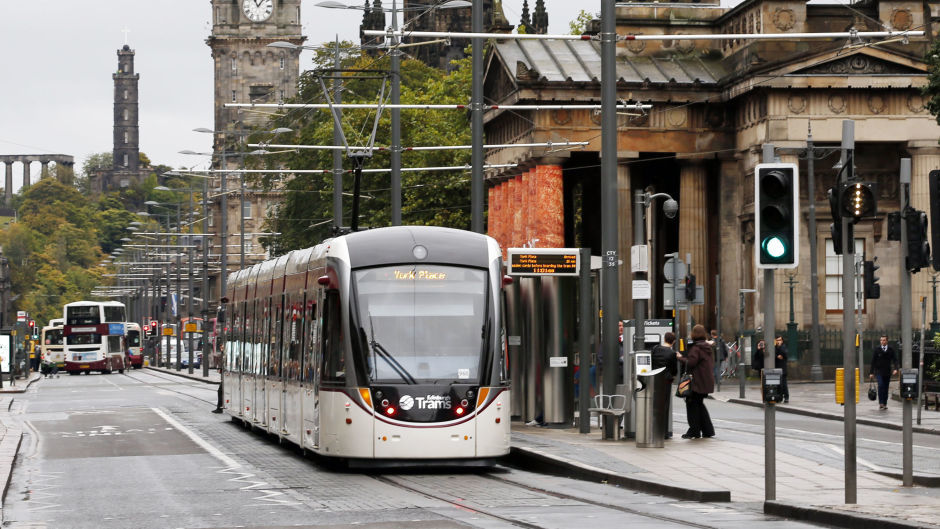
A PREFERRED design option for part of the planned Edinburgh trams extension to Newhaven will be chosen next week.
Attendees at a workshop held last week chose from four options for layouts between Leith Walk between Pilrig Street and the Foot of the Walk.
The preferred option involves all traffic – including cars, taxis, buses and trams – using the same north and southbound lanes with segregated cycle paths and pavements on both sides of the street.
To enable trams and buses to pass, traffic will be stopped at a light-controlled junction to clear the route.
The central verge which holds the tram overhead line is wide enough to be safely used by pedestrians crossing the road and parking and loading is possible on both sides of the street, where there is sufficient space.
The invitation-only workshop included councillors, local businesses and residents, and representatives from Lothian Buses, active travel organisation Sustrans and Living Streets.
Concerns were raised about access for emergency vehicles if the lanes become blocked which the project team is raising with the emergency services.
Rejected options included a layout having separate lanes for traffic and trams and one where the overhead lines for the trams would fixed to buildings or at the side of the street, with corresponding changes in cycle lanes and pavement space.
A final option for this section will be chosen at a further workshop on Wednesday, June 27, and become part of the final design for Edinburgh City Council to vote on in November 2018.
If approved, construction is due to start on Leith Walk in late spring 2019.
Proposed traffic plans include the closure of Leith Walk northbound and a single lane open southbound, along with the closure of sections of Constitution Street, for approximately 18 months during construction.
The workshops for the estimated £165 million project follow public consultuations earlier this year, which have led to a series of changes in the design.
These include scrapping the planned Balfour Street tram stop and having signal-controlled junctions at Albert Street and Manderston Street, as a ban is planned on right turns outwith traffic light controlled junction.
Further changes involve creating three new pedestrian crossings between Pilrig Street and the Foot of the Walk and alignment change at the south end of Constitution Street to accommodate loading.
The extension design is being finalised as a report is awaited from retired judge Lord Hardie, who chaired an inquiry examining why the original tram project was significantly over budget and delivered years later than first planned.
The council’s transport convener, Lesley Macinnes, said: “Thursday’s workshop was enormously useful and we’re very grateful to everyone who has given their time and energy to help us refine the plans for taking the trams to Newhaven.
“We’re working incredibly hard to shape the proposals using the invaluable feedback submitted, so that the final designs which council will vote on twoards the end of this year are as community-based as possible.”

Enjoy the convenience of having The Sunday Post delivered as a digital ePaper straight to your smartphone, tablet or computer.
Subscribe for only £5.49 a month and enjoy all the benefits of the printed paper as a digital replica.
Subscribe